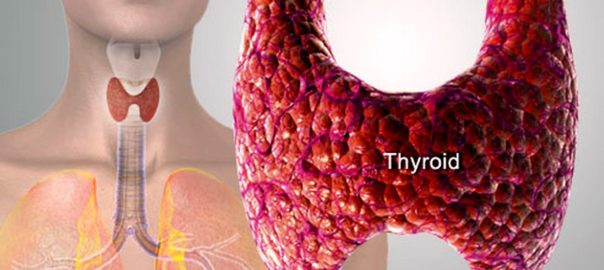The Potential Exists to Treat Thyroid Disease With Stem Cells

The various conditions associated with thyroid dysfunction impact 20 million Americans every year. From uncontrollable weight loss or weight gain to serious complications like cardiovascular disease, thyroid diseases wreak havoc on the body. Now, scientists are working to utilize stem cells to engineer new, fully functioning thyroid cells.
The Thyroid Controls the Body’s Functions
The thyroid is a very small gland located on the front of the neck along the front of the windpipe. Its two lobes are connected by a bridge, and when it is functioning properly, it can’t be felt or detected below the skin. Though small, the thyroid plays a critical role for the body by producing the thyroid hormone that controls the rate at which the body generates energy out of nutrients and oxygen, also known as metabolism. When the thyroid gland produces too much or too little of its hormone, hyperthyroidism and hypothyroidism develop as a result. The current treatments for hyperthyroidism and hypothyroidism help to manage the dysfunction, but can’t provide a cure.
Turning Stem Cells into Thyroid Cells
Researchers at Boston University’s School of Medicine recently led an experiment and published the results in Stem Cell Reports. The team of scientists utilized embryonic stem cells from mice and guided the cells through various stages of development. They targeted the Nkx2-1 gene in particular by switching it on and off for short periods of time. This revealed a “window of opportunity,” in which the Nkx2-1 gene can convert a stem cell into a thyroid cell. Mastering this pattern of genetic switches and signals provides the potential to direct maturing stem cells toward their fates of becoming healthy, fully functioning thyroid cells.
However, the researchers are still working to establish a stronger protocol, as they are currently restricted from high yields due to “the poor or variable differentiation efficiency of many differentiation protocols.” Nevertheless, this discovery by Boston University’s School of Medicine paves the way for thyroid cell research models that can help scientists better understand and design treatments for thyroid diseases. It’s also possible that the “window of opportunity” discovered in the Nkx2-1 gene could apply in other situations to create different types of important cells from stem cells.


